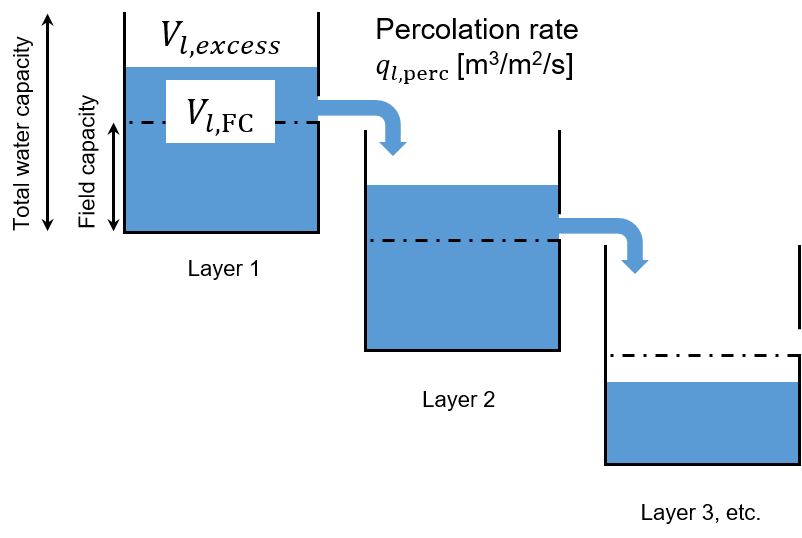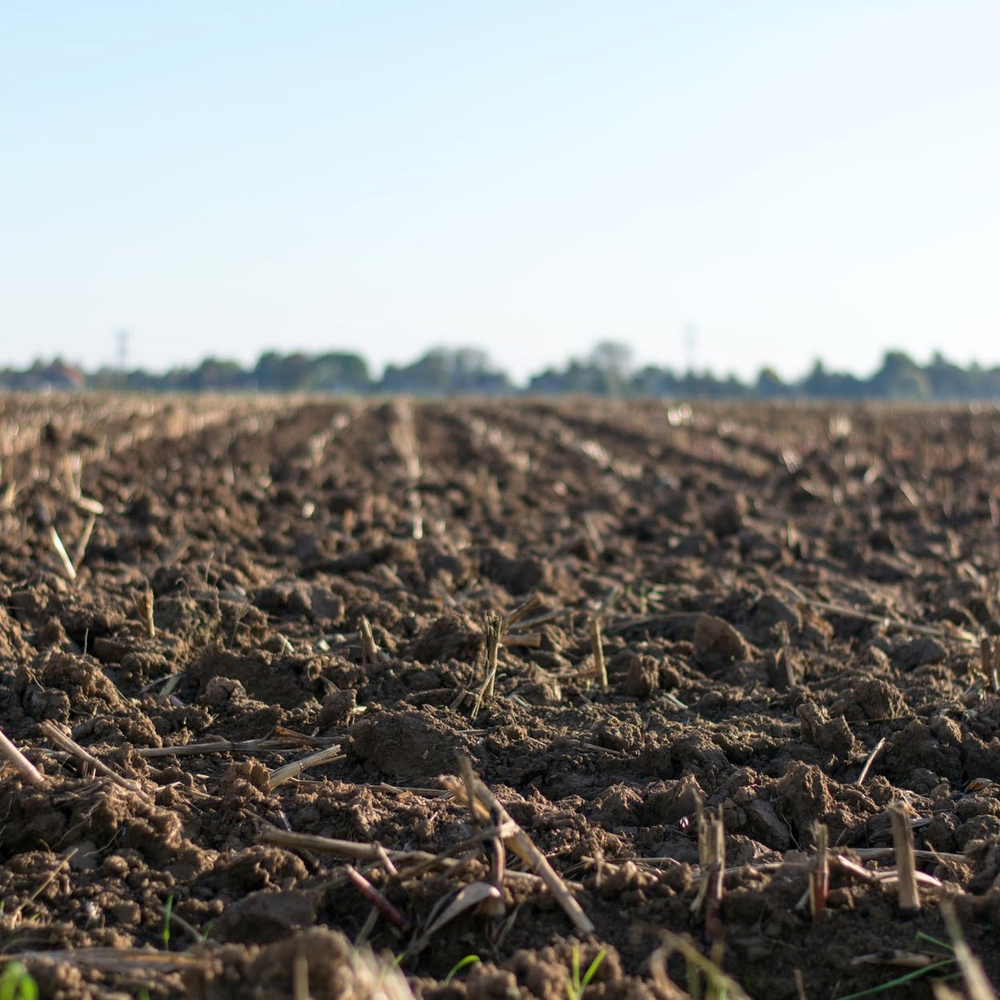Mass transfer in the NanoFASE Model
Mass transfer of nanomaterials through the soil is controlled by the downward percolation rate of water. The soil is modelled as a series of layers each of which has (i) a water storage capacity, above which percolation to the layer below occurs (the field capacity), and (ii) a maximum water storage capacity, above which further water cannot enter the layer. If the field capacity for a layer is exceeded by incoming water then water percolates to the next layer down, provided that the next layer is not already full of water.
Nanomaterial mass transfer from layer to layer is a function of the volume of water transferring from each layer to the layer below, and the mass concentration of nanomaterials within the porewater.
 |
Occurs in |
|
 Soil |
Water volume excess over field capacity:
\(\large V_{l}> V_{l,FC}\rightarrow v_{l,excess}=min(V_{l}-V_{l,FC},V_{l,sat}-V_{l,FC})\)
\(\large V_{l}\leq V_{l,FC}\rightarrow v_{l,excess}=0\)
Percolation rate to next layer:
\(\large V_{l+1}> V_{l+1,FC} + 0.5(V_{l+1,sat}-V_{l+1,FC})\)
\(\large \rightarrow q_{l,perc}=\frac{V_{l,excess}}{\delta t}(1-exp(-\frac{\delta t}{t_{pec}})); t_{perc}=\frac{V_{l,sat}-V_{l,FC}}{K_{sat}}\)
\(\large V_{l+1}\leq V_{l+1,FC}+0,5(V_{l+1,sat}- V_{l+1,FC})\rightarrow q_{l,perc}=0\)
Read more |
Read also |
|
NanoFASE Report D2.2 Spatial transport framework for NanoFASE model |
Neitsch S L, et al. (2011) Soil and Water Assessment Tool - Theoretical Documentation: Texas Water Resources Institute Technical. Report 406. Texas A&M University System. |
Contact

Sam Harrison
Centre for Ecology and Hydrology (CEH)
